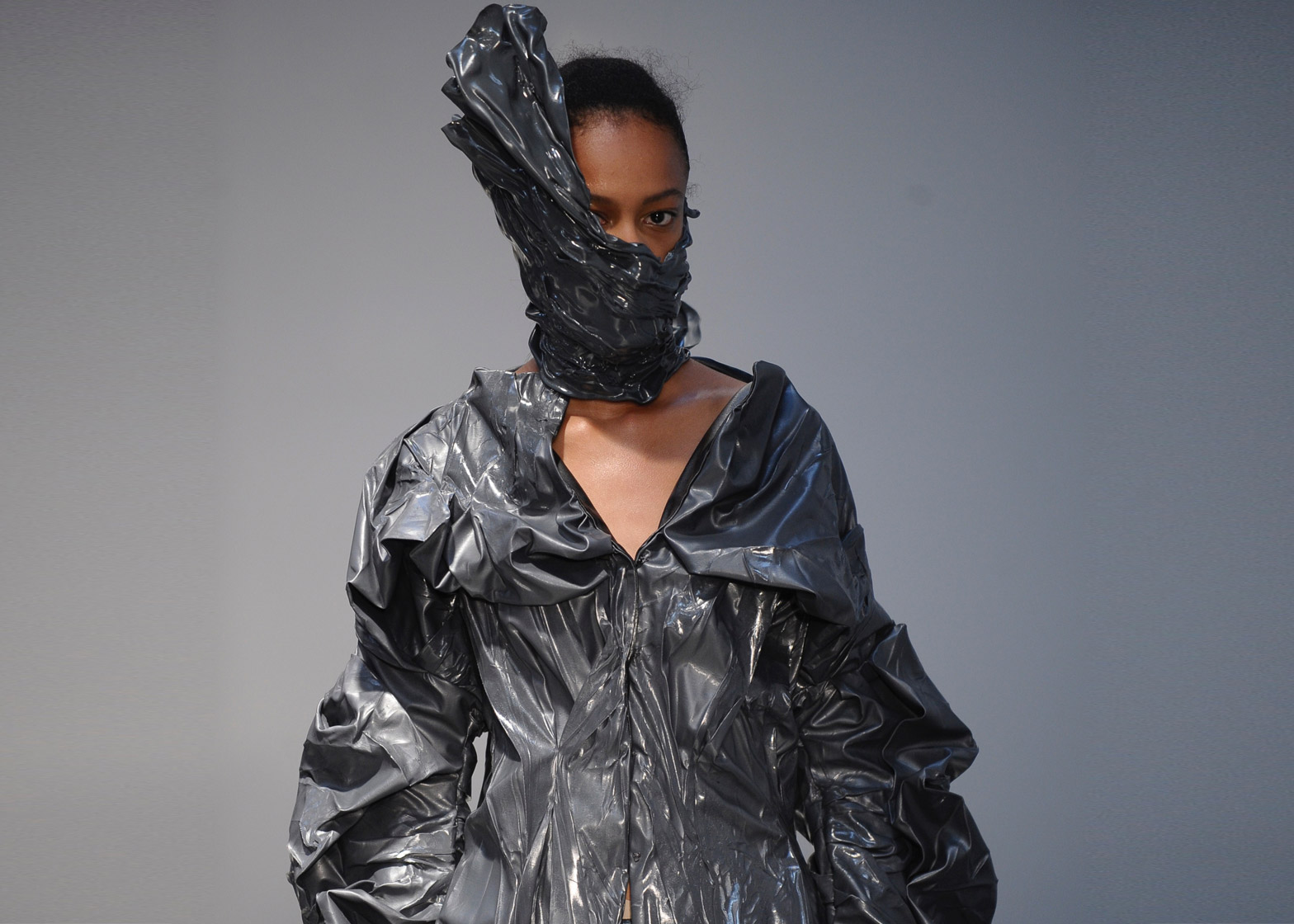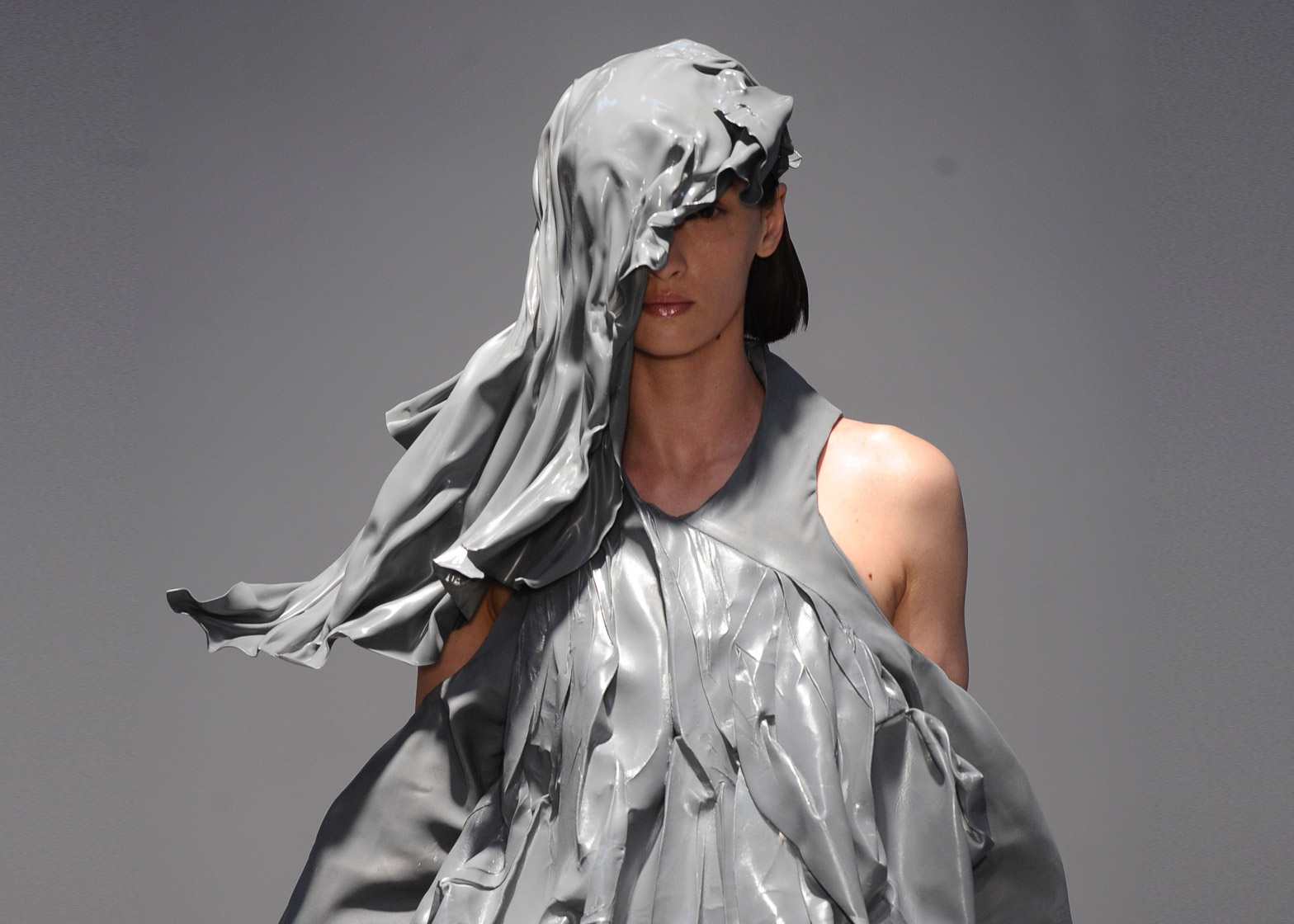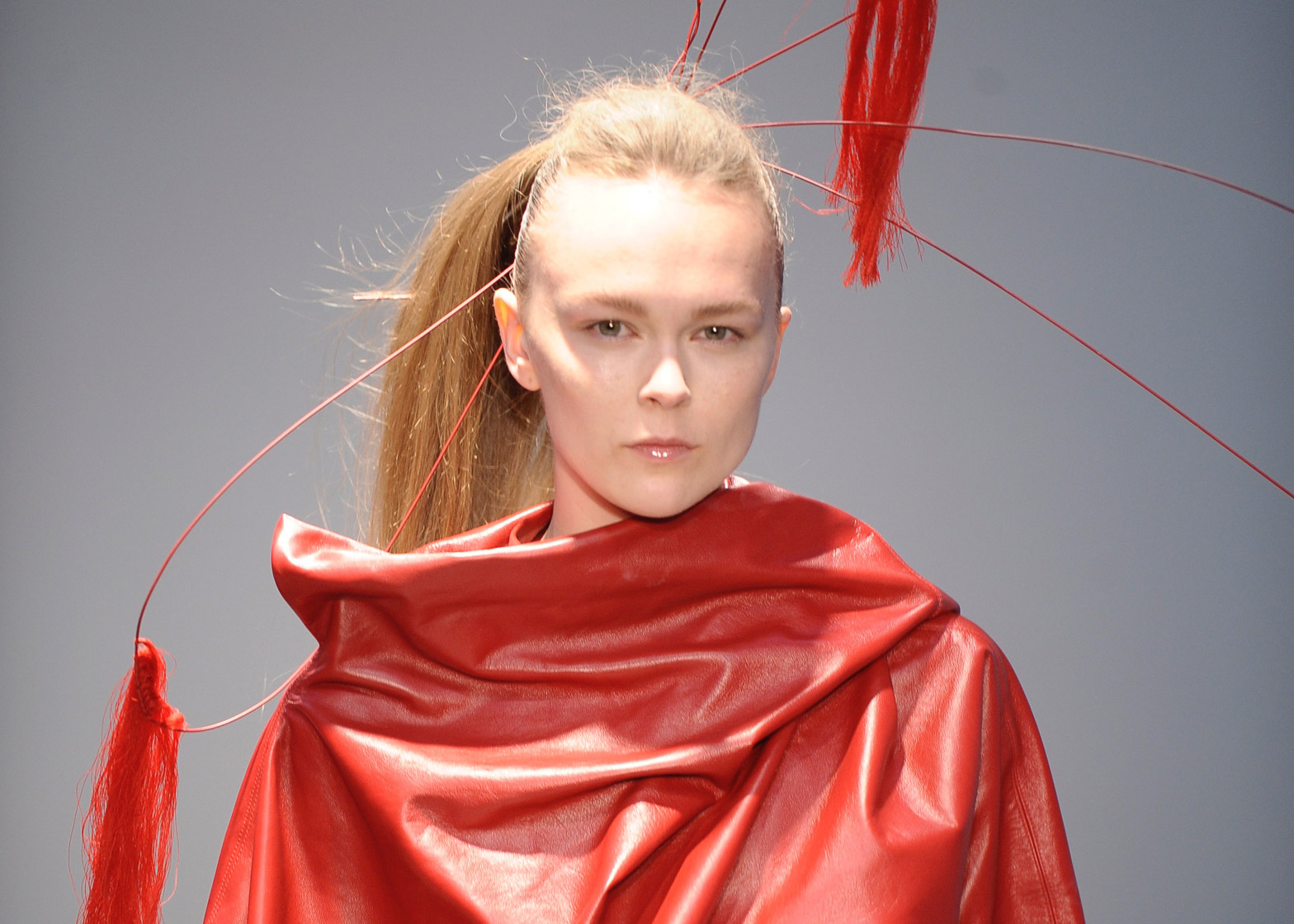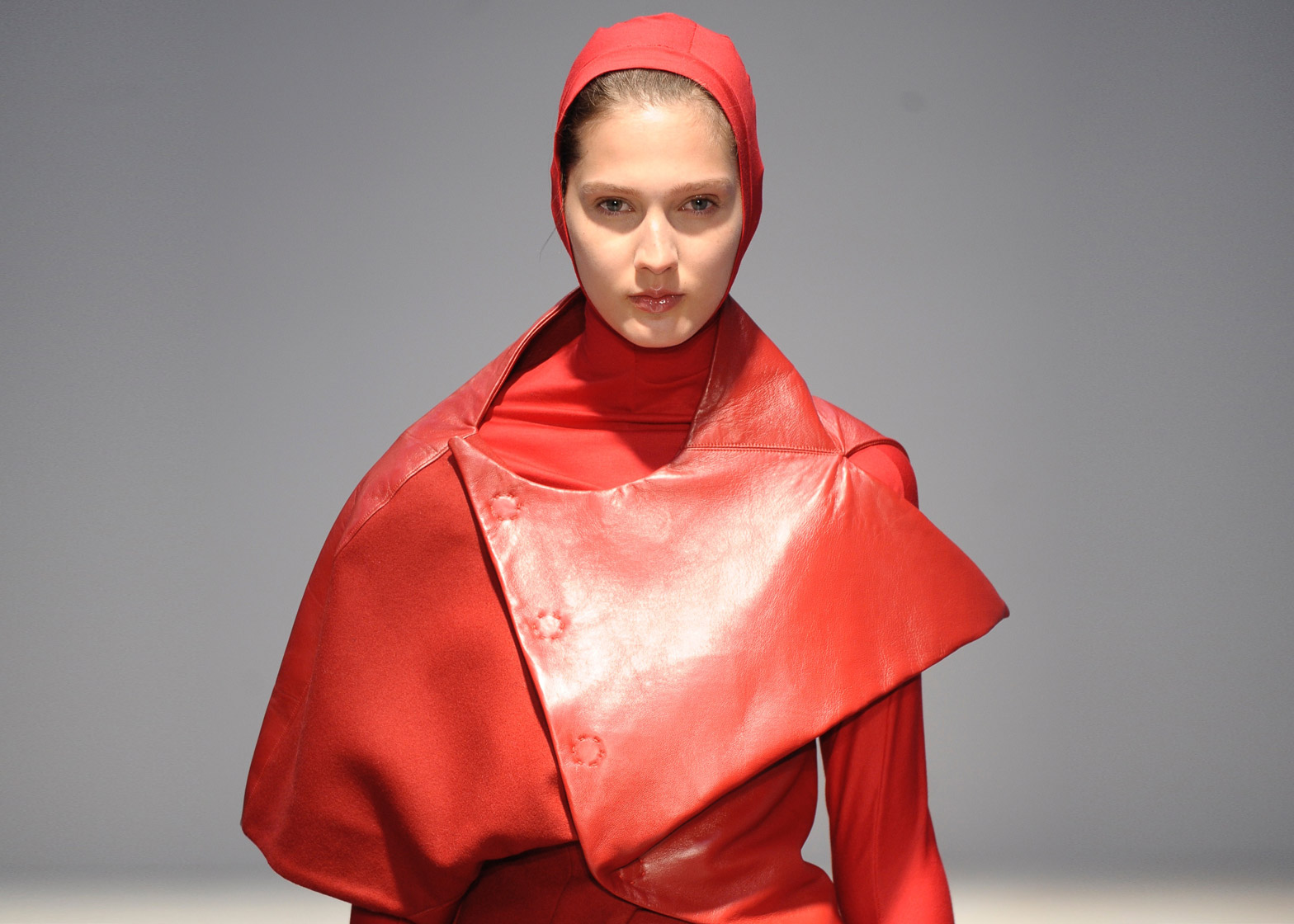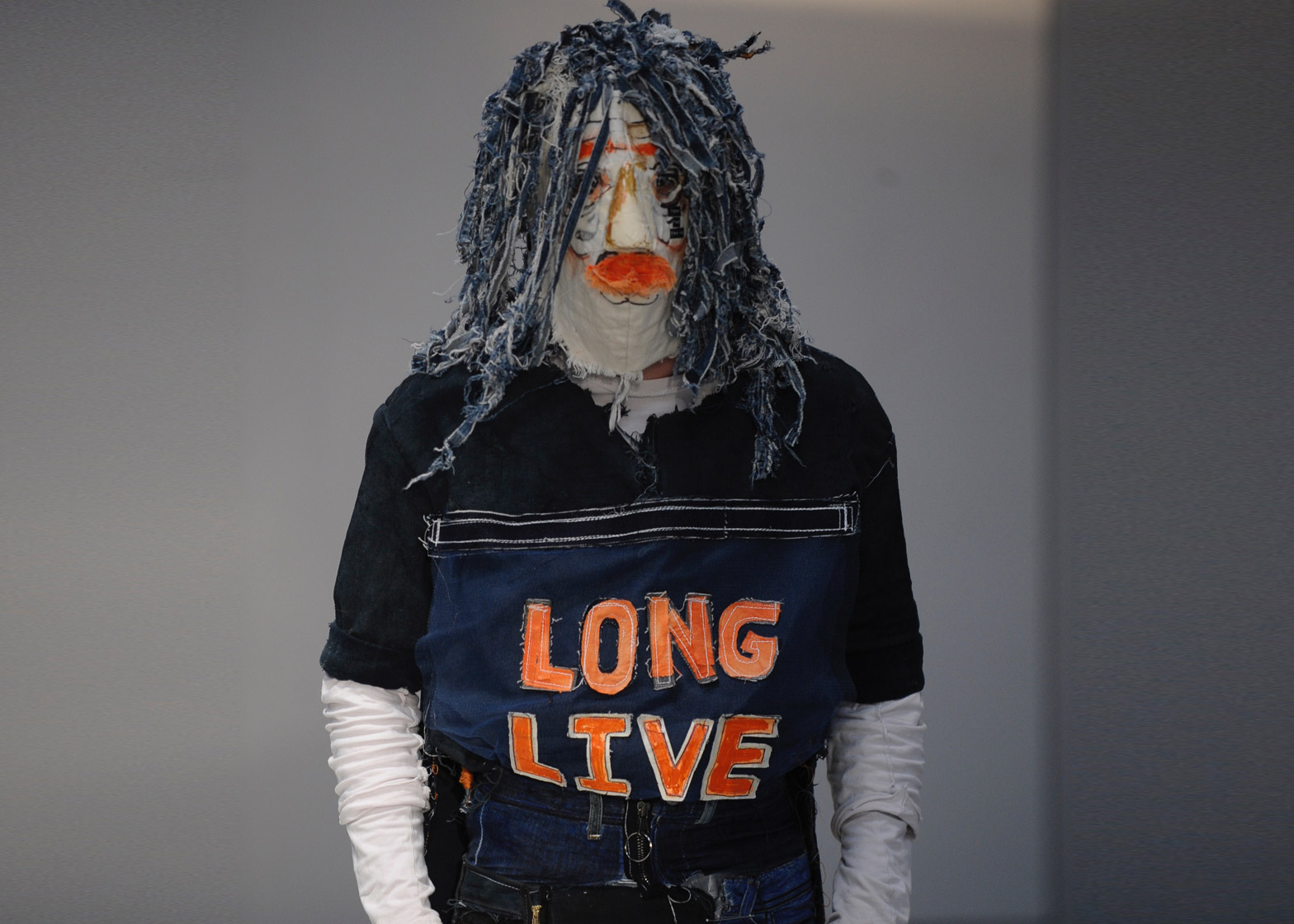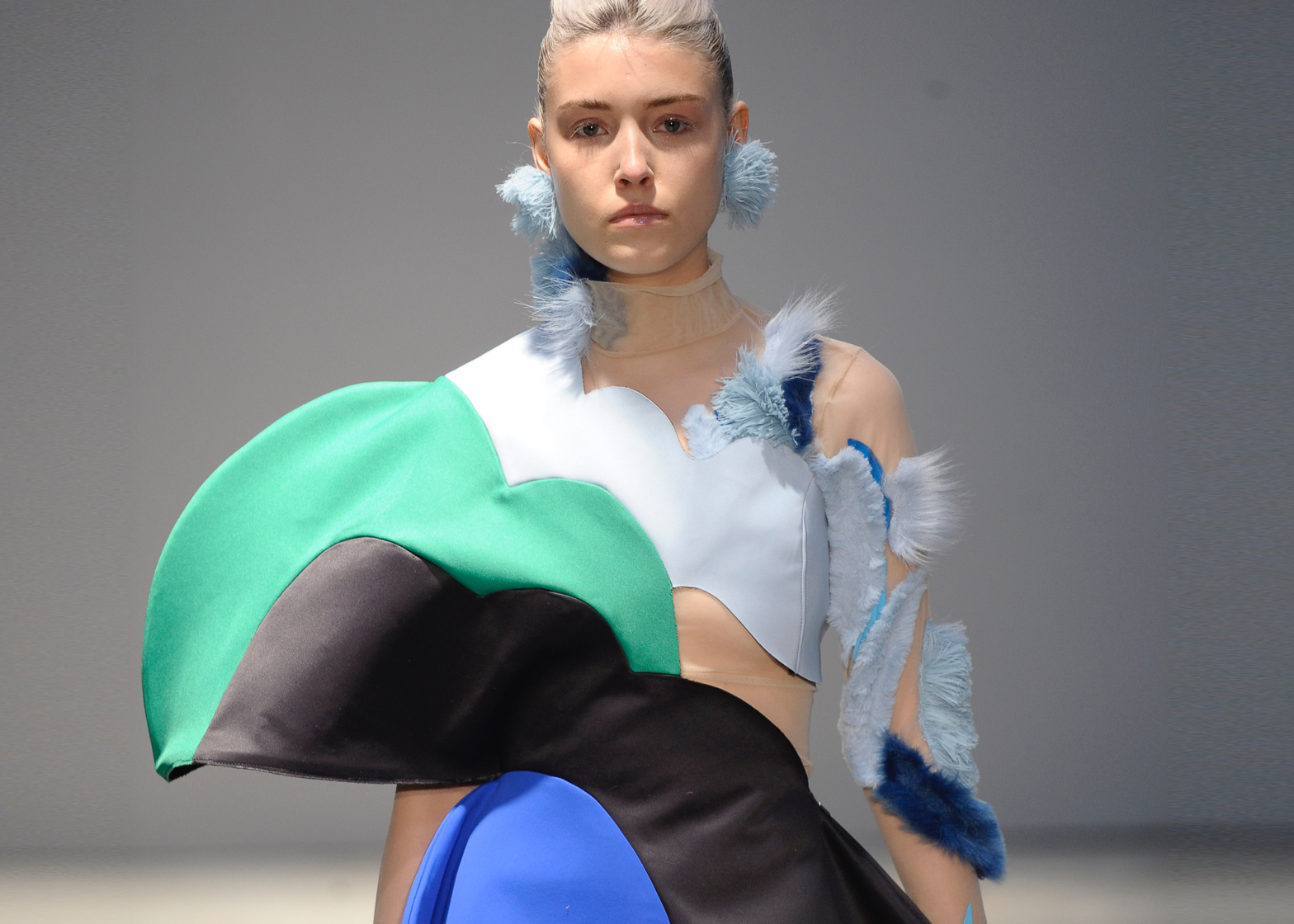Graduate shows 2016: headpieces made from moulded plastic and knitwear inspired by "takeaway culture" are included in our design reporter Alice Morby's pick of the best collections from this year's London College of Fashion graduate presentation (+ slideshow).
The show, which took place last week, featured both solo collections and collaborations between pairs and groups of BA students from different disciplines within the fashion school.
It included pieces by menswear, womenswear, design technology, textiles, tailoring, contour, sportswear and cordwainers students, shown inside a former industrial building in east London – the same location as last year's presentation.
Across the road, an exhibition displayed the work of accessories, marketing, costume design and photography students.
Read on for Dezeen's favourite collections from the show:
Hanni Yang, Qingqing Yu and Shalia Irfan
Womenswear student Hanni Yang worked with cordwainers student Qingqing Yu and jewellery student Shalia Irfran to create a collection based on the "beauty of ugliness".
Yang's leather and wool pieces, which she created on a dressmaker's stand instead of from flat patterns, were inspired by Butoh – a style of Japanese modern dance featuring dancers covered in white body paint.
"The way that the Butoh dancers and artists used their bodies to perform something that people consider to be ugly or even disgusting fascinated me," she told Dezeen.
The models wore accessories by Irfan, who drew references from Picasso's light paintings, hair designs by French stylist Julien d'Ys and headpieces by Japanese fashion designer Rei Kawakubo, founder of Comme des Garçons.
Using wire, spray paint, threads and Plasti Dip – a liquid rubber material usually used for coating metal and other materials – Irfan created delicate-looking pieces looped around the model's heads.
Gayane Arzumanova, Beth Wilson and Yui Jiang
Arzumanova, Wilson and Jiang worked together to create a collection based on moving objects frozen in time, using heat-manipulated faux leather.
The standout pieces from the collection were by jewellery designer Yui Jiang, who created moulded masks based on a scene from the film American Beauty, where a plastic bag is tossed around by the wind.
"The collection is called Animism which means Breath, Spirit, Life in Latin," Jiang told Dezeen. "It reflects the Zen philosophy that non-human entities such as animals, plants and inanimate objects possess a spiritual essence."
"I was interested in how items such as newspapers and plastic bags could stick to our faces and somehow change our identity," she said.
Joseph Standish
For his menswear collection, designer Joseph Standish "turned drawings into sculptures" using materials such as recycled denim and jersey that had been covered in illustrations.
"I created a series of characters from a wider set of beauty than the industry standard," he told Dezeen.
"I think high end fashion can be very esoteric and difficult for people to relate to, I tried to portray my personal frustration with the widespread use of industry standard models and represent a wider image of beauty," he added on the LCF blog. "The end result is 3D sculptures I guess, but they just happen to be wearable. I wanted to push myself with the materials and media I used in my collection."
Wei Yao Lin and Cheng Qian
Wei Yao Lin and Cheng Qian's menswear collection was based on takeaway food culture and ideas of monitoring and control in contemporary society. It featured spongy boxes and knitwear with bold motifs and bar codes layered over typical office wear.
"Nowadays people, especially those who spend most of their time on their work, barely have time to cook," Qian told Dezeen. "Takeaway food is their only option for their daily meals."
The collection included jumpers based on graphic food packaging, a digitally knitted tabard in the form of a receipt and a brown paper-bag-like apron.
"We wanted to achieve a certain kind of hardness, and paper-like quality, but still retain a level of functionality, and wearability in the materials we chose," Yao Lin said. "In this manner, the textiles, techniques, and processes are intertwined together to create a collection that is quite contemporary, largely conceptual, and still perfectly wearable."
Maria Edwina Tjandra and Orel Brodt
Tjandra and Brodt combined a bold colour palette inspired by Parisian graphic artist Ines Longevial with silhouettes based on children's drawings to create a collection of striking womenswear pieces.
"Our collection was inspired by children's drawings and colouring," said Brodt. "All images are first black and white and then filled in with flat graphic colours."
"We wanted the collection to have that happiness and carefree aspect that children have in their work," she continued. "They are meant to have that plush teddy bear feeling of children's toys with an aspect of collage."
A combination of faux fur, mesh, cotton and satin were layered upon each other resulting in voluminous dresses, coats and playsuits.
All textiles were first hand painted, before being needle punched into the fabric and appliquéd to create different densities.

